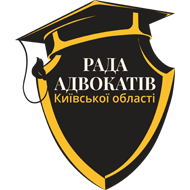About the model of effective lawyer-client interaction, lawyer Marina Saienko shared insights. She is a business mediator of the Industrial and Commercial Chamber of Munich and Upper Bavaria, managing partner of Law of Victory LLC, mediator of the Mediation Center of the Kyiv CCI, certified Soft Skills development trainer. The discussion took place at the professional development event for lawyers at the National University of Kyiv-Mohyla Academy Law School.

The lecturer thoroughly analyzed with the participants the model of effective lawyer-client interaction, including:
- 1. Trust as the foundation for building strong lawyer-client relationships.
- 2. Managing client expectations from interacting with a lawyer.
- 3. Concept of working with client needs, not just positions.
- 4. Common mistakes lawyers make when communicating with clients.
- 5. Lawyer’s tools for building long-lasting strong relationships with clients.
The emphasis on the characteristics of effective lawyer-client interaction is on the following:
1. Trust as the foundation for building strong lawyer-client relationships
The lecturer provided several definitions of trust as the foundation for building strong lawyer-client relationships:
- Trust is a bridge from which your movement towards each other begins.
- Trust is something that requires constant investment of your attention.
- Trust is what becomes the foundation of your effective interaction.
2. Managing client expectations from interacting with a lawyer
Reasons for resistance:
- Lack of trust.
- Bad experience.
- Unawareness of needs.
- Failure to understand perspectives.
- Hidden motives.
Communicative barriers:
- Different goals.
- Different vocabulary.
- Different perception channels.
- Resource status.
It is necessary to eliminate jargon and speak in simple terms.
3. Working with client needs, not just positions
Position is the tip of the iceberg of the client’s request, where there are no best solutions (external demands).
Needs are what the client truly desires and requires, providing a sense of satisfaction from the interaction results with the lawyer (internal motives).
Dive deep with the client and build a partnership.
Types of client behavior in crisis:
- Rationalist — wants to know everything in advance.
- Anxious — seeks support.
- Dominant — expects strict control.
- Passive — shifts everything to the lawyer.
Neutralize resistance – neither ignore nor attack. “I see that this truly concerns you. Let’s figure it out together”.
Identify the need behind the resistance. “What is most important to you here? What specifically causes the most concern?”.
Check beliefs – is it a fact or assumption. Listening. “What have you heard/seen that made you think that way?”.
Return to the common goal. “We both want to achieve the best result for you. Let’s try to find a way together”.
Work with resistance:
1. You just want to prolong the case to earn more.
2. Another lawyer promised me to do it in a week!
3. It’s your fault that the court didn’t satisfy my claim!
4. What’s going on with our case? Why are you silent?
CLEAR model:
C – Context: clarify the situation (facts, needs, fears).
L – Listen: actively and empathetically listen.
E – Educate: explain the situation and action plan in simple terms.
A – Align: align expectations (time, cost, scenarios, risks).
R – Respond: communicate even in the absence of final results.
4. Common mistakes lawyers make when communicating with clients:
- Superficial listening.
- Hasty conclusions and assumptions.
- Ignoring expectations.
- Lack of communication goal.
- Lack of communication plan.
- Position limitations.
- Working with the case, not with the client.
Superficial listening – self-centered focus. “I already know all this”.
Factual listening – focus on words, take what is given, what confirms our hypotheses. “I knew it”.
Active listening – focus on the speaker, try to understand more about their needs and state.
5. Lawyer’s tools for building long-lasting strong relationships with clients
- Active listening.
- Defining goals according to needs.
- Agreements on rules.
- Empathy.
- Role and responsibility distribution.
- Communication tone.
The client is a bearer of valuable information and a beneficiary.
The client is not an obstacle but a partner in achieving a common result.
The lawyer is a strategist, translator, guide, but not a magician.
Success depends on the synergy between the lawyer and the client.
Source – https://tinyurl.com/bdh8dd5s



